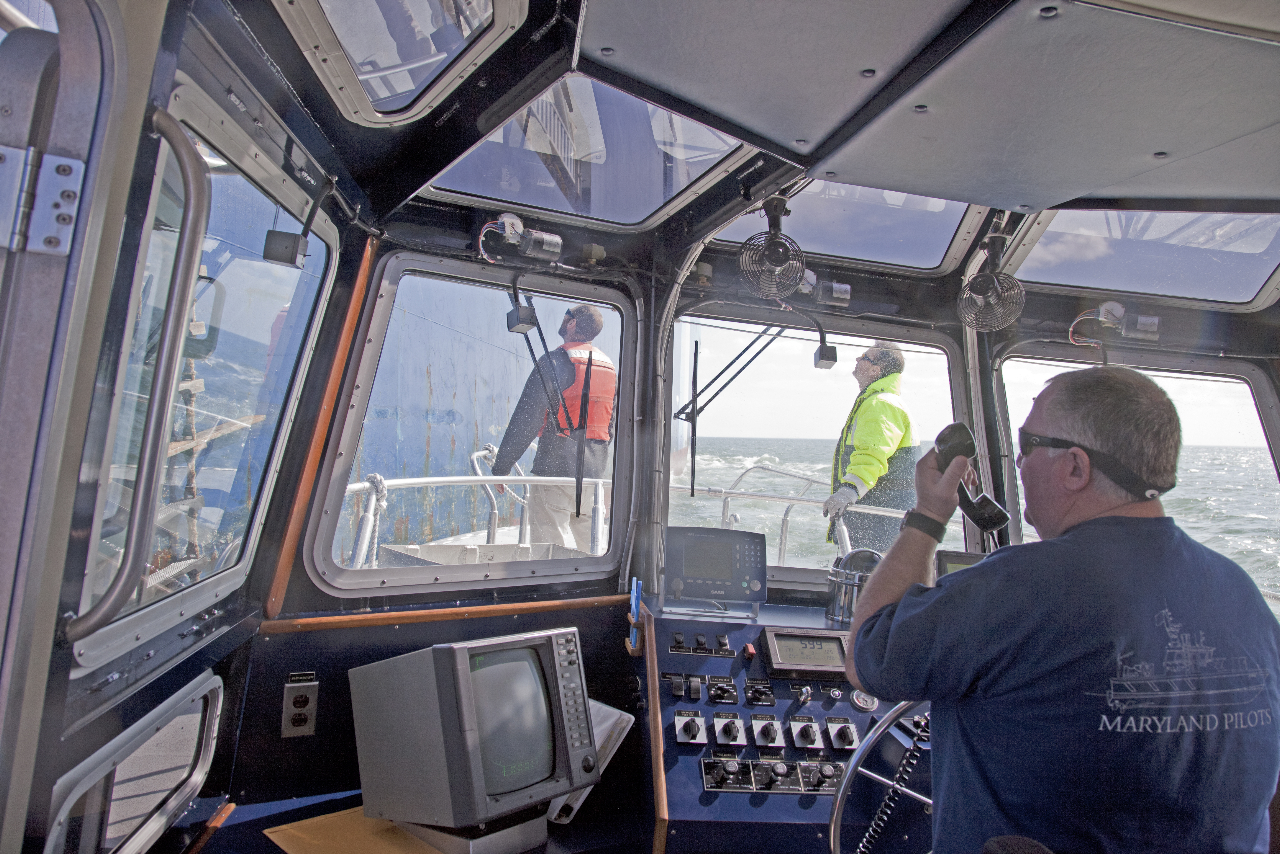I recently rode along with the crew of the Patuxent, one of the Maryland Pilots’ launches. The 52' aluminum deep-V pilot boat, built by Gladding-Hearn Shipbuilding in 2003, is a Chesapeake-class C. Raymond Hunt design that has served both the Maryland and Virginia pilots well for the past decade. I first rode a Chesapeake-class boat in 2002 when the first pilot boat, the 26-knot Patapsco, was delivered to the Maryland Pilots.
The Association of Maryland Pilots Lower Bay Station is next door to the Virginia Pilots. The Maryland pilots board ships entering the Chesapeake and guide them up the bay to the port of Baltimore. The Virginia pilots guide ships bound for the ports of Hampton Roads and other Virginia ports. The run from the station in the Lynnhaven Inlet to the buoy marking Cape Henry where the pilot boards inbound ships or disembarks outbound ships is about a 30-minute ride in the launches.
Last week I rode along with Doug Gardner and Adam Cullen on the Patuxent. The operators switch back and forth with a second crew working days on one hitch and nights the next. Gardner and Cullen also switch back and forth between operating the boat and handling the deck. It was interesting to see how well the boat has held up over the past decade. The pilots’ meticulous maintenance regime has a lot to do with that. These boats run 24/7/365 and are still as sharp as they were 10 years ago.
As we headed out to meet the first ship, Gardner joked that he could guarantee I would be witnessing a collision shortly, “a controlled collision, for sure, but a collision.” Ships in the approaches are limited at this time of year to 10 knots to protect migrating whales. We matched the ship’s speed and when the pilot appeared in the doorway near the ladder, Gardner came alongside for the “collision.”
Moments later, Cullen helped the pilot aboard and grabbed his bag as the ship's crew lowered it. Then, gunning the MTU Series 60 diesels, the launch peeled off from the ship and headed back to the station.
As the afternoon progressed, the wind picked up and whipped up a chop to go with it. This is when the finesse of the operator really comes into play. The big car carrier turned slightly to make a lee for the launch but there was still a good three-foot sea running between us. Then, just as neatly as earlier in the day, Gardner pulled alongside and safely retrieved the pilot.
I asked Cullen if this had been a difficult landing. He just smiled. “You should come out on a winter night when it’s blowing and the spray is freezing up.” The conditions at the mouth of the Chesapeake vary from balmy and calm to North Atlantic wildness, sometimes in the same week.
The deep-V hull handles the waves and each MTU delivers 600 hp of speed and power to give the pilots a safe and comfortable ride after the long trip down the bay. The Chesapeake-class boats are great, but the skill of the launch crews still leaves me in awe.




